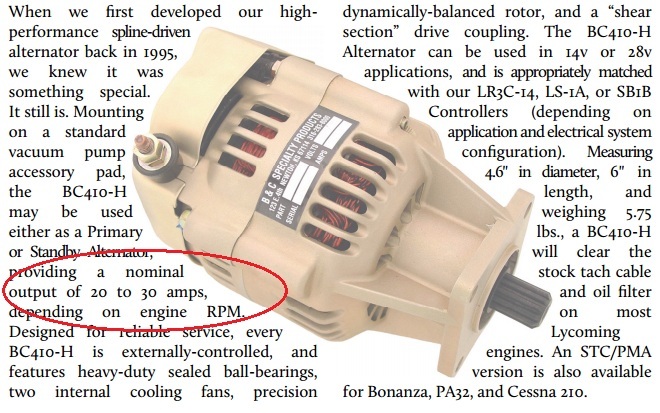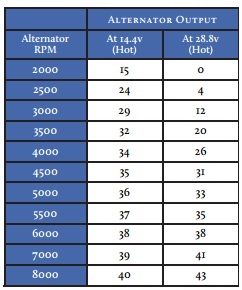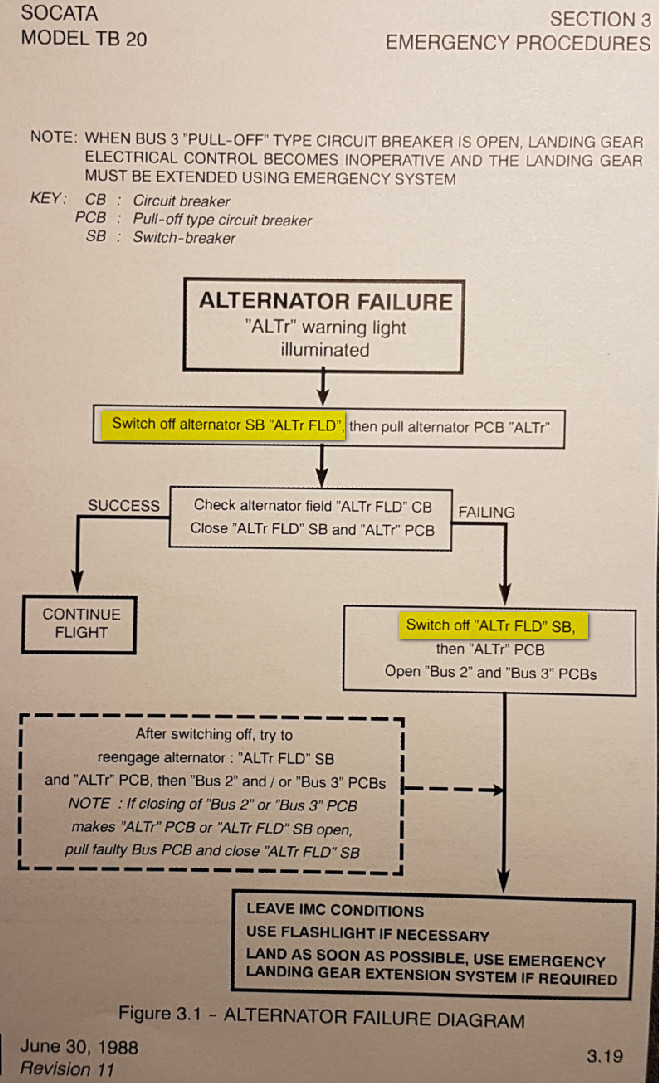PetitCessnaVoyageur wrote:
Is your (beautiful) aircraft apart ?
In bits and pieces. But the good news is that it means progress.  It is amazing what had to come out to change seatbelts and take the O2 tanks out.
It is amazing what had to come out to change seatbelts and take the O2 tanks out.
I can’t believe that you found hidden defects, that’s contrary to any moral 
Peter wrote:
Jesse at what RPM did you get what output, versus the claimed mfg data?
Can’t remember, it was either at max RPM or at specified RPM, see post #28.
One other suggestion, is that they are advertised as 20-30 Amp alternators. While the dataplate on these say it is rated at 20 Amp.
You expected 20 Amps at cruise 2300 RPM at post #49 (which I agree, it should do).
At post #6, you indicated:
Reviewing my emails with B&C from 2013 it looks something like 15A should be achievable at 2400 crankshaft rpm (3120 alternator rpm).
Ok, so they say, 15 Amp at 2400 RPM engine RPM, so at a higher RPM, a lower current. 15 Amp compared to the advertised 20 to 30 Amps, means it is under performing by 50% or 25% at best. I would definetly call that substantial lower. You don’t have much room in RPM either. From this 15 Amp, you should reduce 2 Amp or so, for field regulation, making the resulting output only 13A.
So it seems from the E-mail you received from them, that they admit their output is lower then advertised.
I have a reply from B&C:
“With the BC410-H/1 you will see just above 12 amps when hot. That number could increase by 2 amps or so with cooling”
This is at 28V, not 12V when you would get a lot more current. The regulator would be set to 27.5V as described previously, so one gets automatic fallover if the main alternator fails. It is at 2400rpm on the engine and I can go to 2575.
It is interesting that the output is cooling dependent. They suggest using a standard SCAT hose to bring some cool air to it. I am going to look into that, because the air behind/below the engine is not going to be very cool. Some data from here suggests the delta-t across the engine is about 30C…


Peter wrote:
Reviewing my emails with B&C from 2013 it looks something like 15A should be achievable at 2400 crankshaft rpm (3120 alternator rpm).
Peter wrote:
I have a reply from B&C:“With the BC410-H/1 you will see just above 12 amps when hot.
Ok, so we started with an alternator which is advertised to do 20-40 Amps at cruise RPM
Then it became 20-30 Amps depending on RPM
Then it became 15 Amps
Oh, then it became 12 Amps when hot. 12 Amps is nowhere near 20 or 40 Amps (The 28 Volt version is also rated at 40 Amps max).
Peter wrote:
It is at 2400rpm on the engine and I can go to 2575.
Ok so you can increas the RPM by 175 or 227,5 RPM increase in rotor RPM. This is not going to bring you anwhere near the other 6, 16 or 26 Amps.
So basically they agree that they don’t do anywhere near their rated output, on a Lycoming engine. That is what I am saying the whole time. It might be a very good alternator to do 14 Amps, but you will never get it at 20, 30 or even 40 Amps at cruise RPM on your engine.
Peter wrote:
This is at 28V, not 12V when you would get a lot more current.
This is only true when your not at maximum output. Maximum output, is only possible with maximum flux, at maximum flux, the output is soley limited by the stator of the alternator. The stator is therefore for certain amps, not voltage. E.g. the stator on most 12 volt and 24 volt is the same. They are for example 60 Amps stators.
The rotor design is voltage dependend.
I appreciate the effort you put into that posting Jesse  but if you actually read what I had earlier written you would see that
but if you actually read what I had earlier written you would see that
1) I asked you whether you contacted B&B with your test results – you did not, instead ranting on about “They just don’t want to give spare parts, proper manuals etc. Just saying exchange isn’t service.” etc etc and how crap American stuff is
2) I asked you about your test methods – you replied with “Can’t remember, it was either at max RPM or at specified RPM”
Anyway, I have asked B&C the following questions and their answers are below:
1) What would be the output with engine rpm of 2575? Answer: Approximately 19 amps
2) What would be the output in a 12V aircraft i.e. the regulator set to 13.5V or 13.75V? Answer: About 30 amps
So it looks like I can get close to 20A at max engine rpm, which is reasonable given that cruising at 2575rpm is only a slight fuel penalty (note that SR22 pilots have less choice), and you appear to be wrong about the 12V application generating the same current.
Clearly the output current is strongly RPM dependent, and loads of GA engines rev faster than 2400 or even 2575.
Once I get my new engine, I will move on with a Field Approval for this installation. I have a good contact in the USA who can push it through their FSDO for me.
Of course you might say that under EASA this would be a Minor Change (which as it turns out would cost the customer a few k € in paperwork  ). Sorry, could not resist!
). Sorry, could not resist!
Peter wrote:
I appreciate the effort you put into that posting Jesse
Thank you. I am trying to get an honest insight in this, and share my experiances. Which might help some people to make theire decission what is best for them, either this small alternator, a big second alternator, or a battery or a combination. I can’t be bothered if you buy it or not, so I can make my statements totally independent.
Peter wrote:
I asked you whether you contacted B&B with your test results
I did several times, when I freshly tested these things, as indicated before, always after complaints of customers. So either they where broken, without visual damage, or they don’t make up their expectations. I think that they where not broken, but didn’t meet the expectations. Nowadays I would suggest to pull them off when a customer doubts them, and put on seconday big alternator, or a backup battery system. You can get these for most aircraft.
Peter wrote:
They just don’t want to give spare parts, proper manuals etc. Just saying exchange isn’t service.” etc etc and how crap American stuff is
This is true, for most aviation companies independent for their location. I think this is bad, and is not in the customers interest, as you can’t do field support anymore. For example Narco didn’t have the most reliable name, yet they produced manuals, and you can still service most of their equipment, which is very good. The same for Bendix/King, their maintenance manuals are excellent.
While for example, Garmin, Avidyne, Trig, to name a few, don’t produce any useable maintenance documentation. IMHO this shouldn’t be allowed. When your speaking your over the barrel, that is in those cases where you don’t have a choice, and have to go to trough that manufacturer for exchange. I can’t imagine you wouldn’t agree with that. Don’t you feel that if you bought a product, it is your product, and you should be able to either repair it or have it repaired by someone you can choose?
The same is true for Skytec for example, or B&C. It has nothing to do with the quality of their products, thirdth party support should always be possible IMHO. Again this has nothing to do with American / Europe, it is again the same, “modern” way of doing business.
Peter wrote:
I asked you about your test methods
The test methode for all alternators is the same, you run them using maximum flux, with variable load to control the voltage, and then you get a figure for how many amps at which RPM at a certain voltage (14 or 28).
Peter wrote:
and you appear to be wrong about the 12V application generating the same current.

As you can see I am not, the stator is capable of delivering 40 Amps on both 14 and 28 volt. With your engine, you can just never get their as you can’t run the lycoming at 6000 RPM. On the Rotax it is 0.5:1, and you won’t be doing 19000 RPM on the Rotax either. So either the gearing is poor, or the maximum flux part is poorly choosen. If you would go faster then this 8000 RPM the stator wouldn’t go to 100 Amps for example, it’s limited to 40 Amps.
It would be fair if they would advertise with 12 Amp alternator, as it can certainly make this. Some Cessna alternators are like that, which perform better then advertised. In those cases it reaches maximum flux early, and even if you increase RPM the output wouldn’t get higher.
There current advertising is like fuel consumptions on modern cars, you can reach them under certain specific test settings, but never in a real life situation. That shouldn’t be allowed. I don’t understand why a company would want to work like that.
One more tip:
An alternator can fail partially or completely. When it fails completely, switch of the alternator field of the failed alternator if possible. That reduces the used current, as it doesn’t make sense to have (maximum) field current flowing in such situation, and thereby reducing the capacity of your backup. This tip is valid for all situations, in cases with backup alternator, backup battery or just one battery and one battery. Typically it would save you about 1,4 to 4 Amps depending on the type of failed alternator.
That’s a good one; it should be on a “alternator fail” checklist, and it is on mine

Socata has quite decent electrical system, on those aircraft which a lesser electrical system installation, it is a good idea to check the alternator, on a partial failure (diodes for example) the output of the alternator is below standard. In that case it is a good idea to reduce the load (switching of unneccesary equipment) as normal, but keep the alternator ON (for example when it outputs 26 Volt for example, instead of 28 Volt). The load is then shared between the battery and the alternator. So even that the alternator has failed, it still makes up for part of the load. Switching the alternator OFF in such a partial failure will reduce battery more quickly then when leaving it ON.
An voltmeter in your aircraft is the tool to use, to determine if you have a complete alternator failure or partially failure.